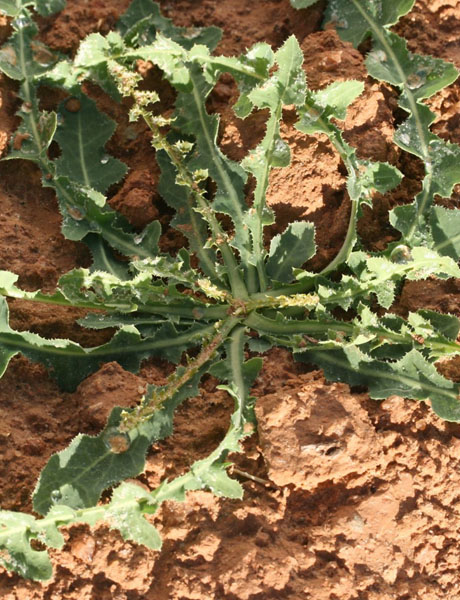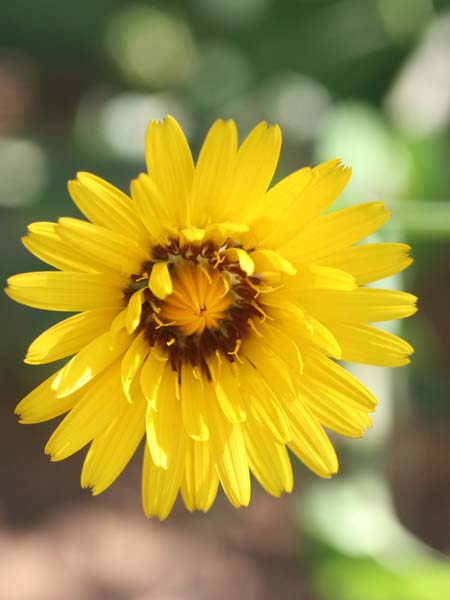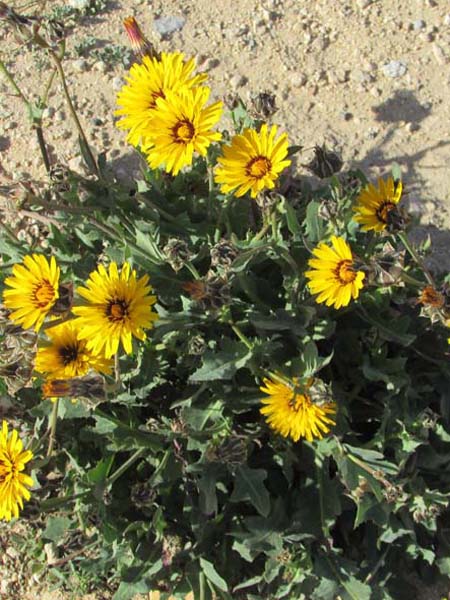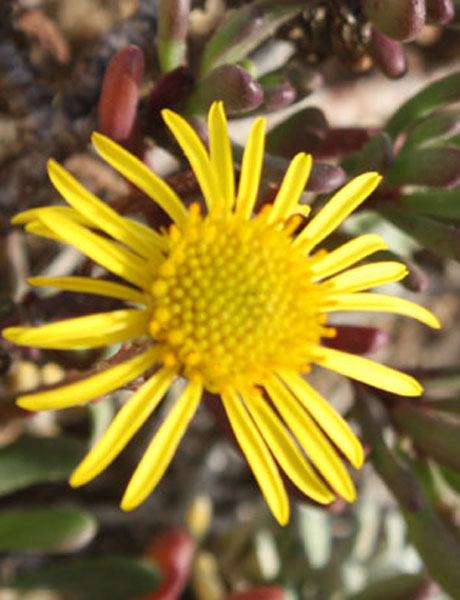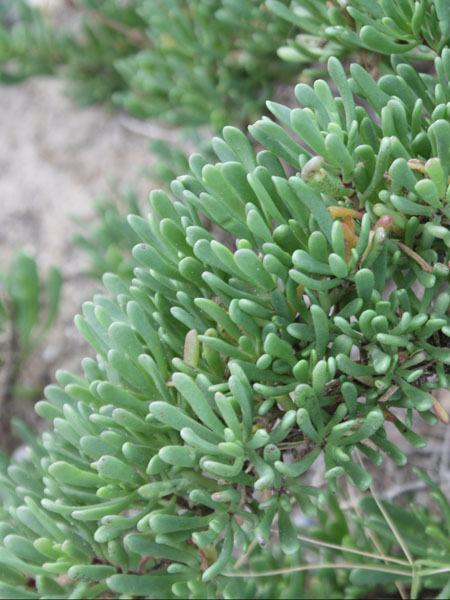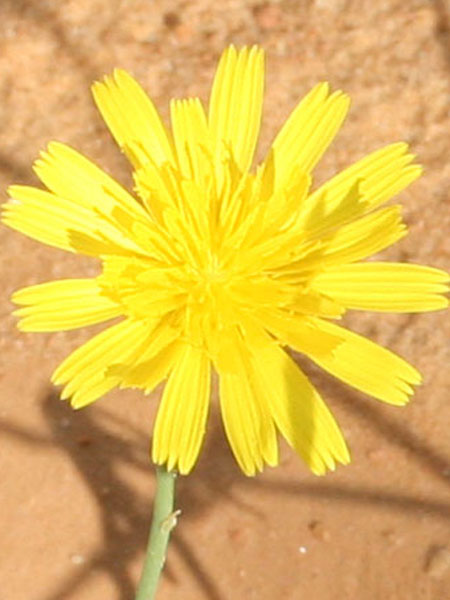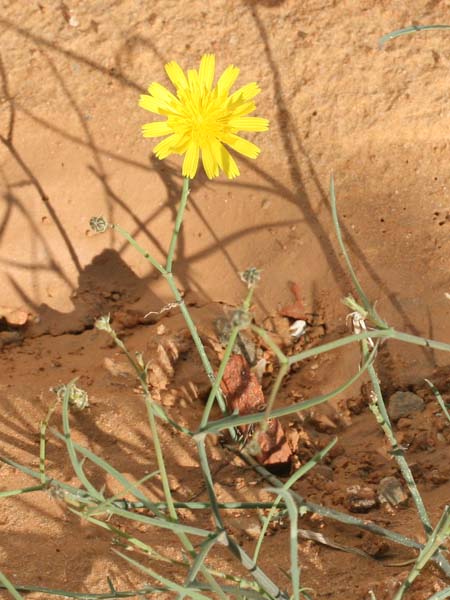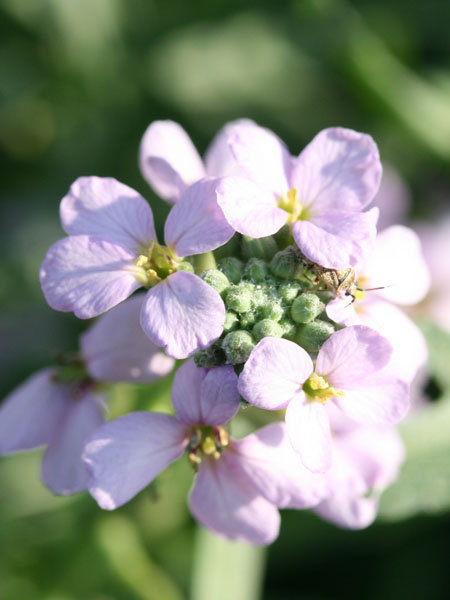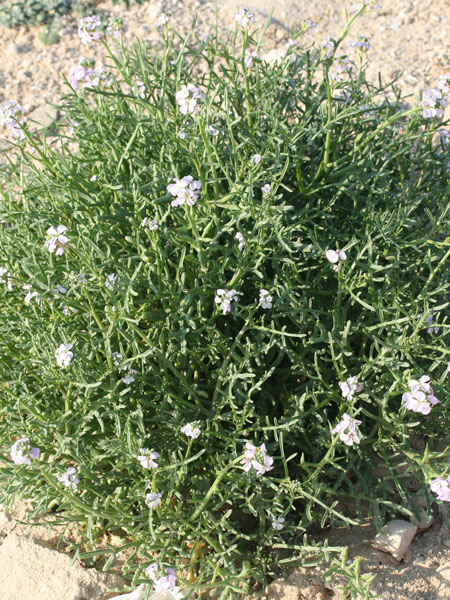Pallenis maritima
Kingdom : Plantae / النّباتات
Division : Spermaphyta / البذريات
Clade : Magnoliophyta or Angiospermae / مستورات البذور
Class : Eudicotyledoneae / ذات الفلقتين
Order : Asterales / رتبة النّجميات
Family : Asteraceae [Compositae] / الفصيلة النجميّة أو المركّبة
Genus : Pallenis
species : maritima
Chromosomes: 2n=12
Protologue
(L.) Greuter in Fl. Medit. 7: 47 (1997)
Synonyms
Buphthalmum maritimum L., Sp. Pl., ed. 1, 903 (1753). Nauplius maritimus (L.) Cass., Dict. Sci. Nat. 34: 274 (1825). Asteriscus maritimus (L.) Less., Syn. Gen. Comp. 210 (1832). Odontospermum maritimum (L.) Sch. Bip. in Webb & Berthel., Phyt. Canar. 3 (2): 232 (1844). Asteriscus mauritanicus Jord. & Fourr., Icon. Fl. Europ. 1: 42 (1867). Asteriscus maritimus (L.) Less. var. mauritanicus (Jord. & Fourr.) Maire in Jahand. & Maire, Cat. Pl. Maroc 3: 758 (1934).
Common names
Tunisia Arabic English French Tamazight
زباد بحري
Beach Daisy
Canary Island Daisy
Sea Aster
Astérolide maritime
Toxic
no
Edible
no
Latex
no
Botanic description
Genus description
"Capitulum heterogamous multiflores and radishes. Yellow flowers, those of the periphery ligulated, females, on 1-2 rows, to a tubes triquêtre, those of the center tubules and hermaphrodites. Hemispherical involucre, with few bracts, double: the external, foliated, indurated at maturity, protruding from the ligules. Paleaceous receptacle, with scarious scales kissing the flowers. Hairy, silky, hairy achenes, those of the periphery not winged and triqueter. The other obconics, all with a laciniated crown.
Species description
"Very rustic, hairy, woody plant with a lining and bushy habit.
Stems erect or lying, toweling, 5-30 cm high, simple or ramous, irregularly branched, are quickly lignified, their brown-beige surface is covered with bristly hairs. Leaves covered with shaggy hairs which give them a greyish appearance, whole oblong or spatilate, obtuse somewhat fleshy, alternate have a broad petiole, gutter-shaped and their blade narrow and elongated, with a single visible vein, the lower all attenuated petiole , sessile superiors never embracing. Flowers composed, yellow, 3-4 cm in diameter, broad-bodied. In the central part, small hermaphroditic florets, tubular with 5 lobes, toothed with 5 stamens, tubular anthers. Inflorescence pale yellow terminal capitules with a yellow center of gold, long radiated (4 cm in diameter). Ligules very developed. Fruits crowned silky pubescent achenes provided with a toothed egret.The peripheral fruits have the peculiarity to present two wings on both sides of the achene, while the central ones do not have one, but the pappus is longer.
Botanic References
Pottier-Alapetite G. (1981). Flore de la Tunisie Angiospermes –Dicotylédones (Gamopétales première partie). Imprimerie Officielle de la République Tunisienne (Eds), 982p. Edouard LE FLOC’H, Loutfy BOULOS et Errol VELA. (2010). Catalogue synonymique commenté de la FLORE DE TUNISIE. République Tunisienne, Ministère de l’Environnement et du développement durable, Banque Nationale de Gènes. 500 p www.theplantlist.org
Biology
Life form Perennial Type form Therophyte Photosynthesis C3
Phenology
Blooming
JanuaryFebruaryMarchAprilMayJuneJulyAugustSeptemberOctoberNovemberDecember
Fruiting
JanuaryFebruaryMarchAprilMayJuneJulyAugustSeptemberOctoberNovemberDecember
Map Localization
Ecology
Adaptation A rare halophilous species, rocks and stony places, on the coast, very sunny and above all very well drained. Supports very dry, arid conditions, spray and wind. Salt bladder yes Invasive no
Geographical distribution
Localization Biocimatic stage Annuel pluviometry (mm) GPS Cap Bon (Kélibia, Fév. 2016)) Superior semi-arid 444 36°50'2.68"N / 11° 7'0.52"E Cap Bon (Haouria, Mars, 2014) 444 37° 3'30.43"N / 10°59'43.76"E
General uses
Ornamental plant : it is found at the sea edge, it forms a ground cover, it is abundantly and commonly found on rocks.
Medicinal uses
"The plant is considered to be stomachic. The flowers contain a particular camphor quite close to the "camphor of Inula helinium.
NOTE : This website is not that of herbal medicine and assumes no responsibility for the negative effects of the use of plants. Seek advice from a professional before using a medicinal plant.
Systems / Organs / Effects
Digestive System Antiseptic
Test results
TPC DPPH ABTS+ FRAP Year mg GAE g-1 MS CI50 g ml-1 CI50 g ml-1 CE50 g ml-1 20,56± 0,34 27,91± 0,32 33,43± 4,08 87,36± 3,68 2016 Total Phenols content(TPC), Anti-radical potentialities against (DPPH, ABTS), Ferric reducing antioxidant power(FRAP)
Molecules : ADN / Proteins
Chromosomes : 12 Uniprot NCBI
Chemical composition
Name Terpene Essentiel oils
Other compouds 4-hydroxy-2-methoxybenzaldehyde link
8-hydroxy-9,14-diisobutyryloxythymol
Isobutyrate 10-isobutyryloxy-8,9-epoxythymyl
Tunisian references
Medimagh S, Daami-Remadi M, Jabnoun-Khiareddine H, Naffati M, Ben Jannet H. (2013). Chemical composition and in vitro evaluation of antimicrobial and anti-acetylcholinesterase activities of the root oil from Asteriscus maritimus (L.) Less Growing in Tunisia. J Essent Oil Bear . Pl 16: 443-450. Medimagh-Saidana, S., Daami-Remadi, M., Abreu P., Harzallah-Skhiri, F., Ben Jannet, H. & Hamza, M.A. (2014). Asterisulphoxide and asterisulphone: two new antibacterial and antifungal metabolites from the Tunisian Asteriscus maritimus (L.) Less. Journal Natural Product Researh 1418-1426
Other references
Palá-Paúl J, Usano-Alemany J, Soria AC.(2014). Essential Oil Composition of Asteriscus maritimus (L.) Less. from Spain J Plant Biol Soil Health Issue:1, Vol.:2 Guadagni F, Lobba MG, Longa D. (2013) Noterella 0130: Pallenis maritima (L.) Greuter. Acta Plantarum Notes, 2: 159. Gennai M, Fenu G, Bacchetta G, Foggi B, Lombardi L, Pasta S, Scuderi L, Domina G, Wagensommer RP. (2015). Pallenis maritima (L.) Greuter. Informatore Botanico Italiano, 47 (1) 99-140




















